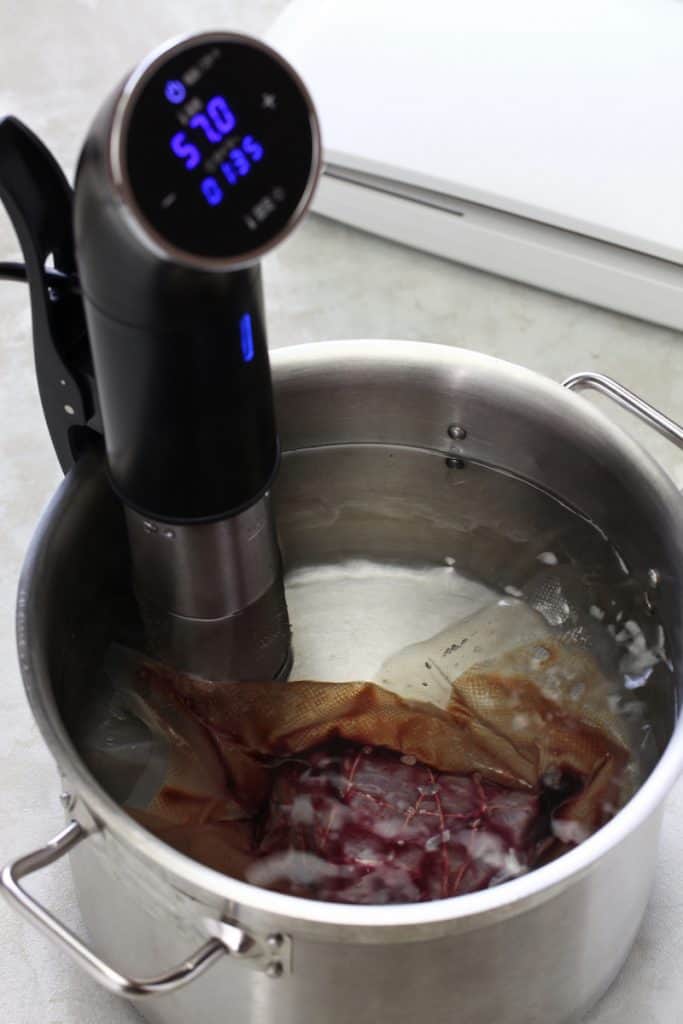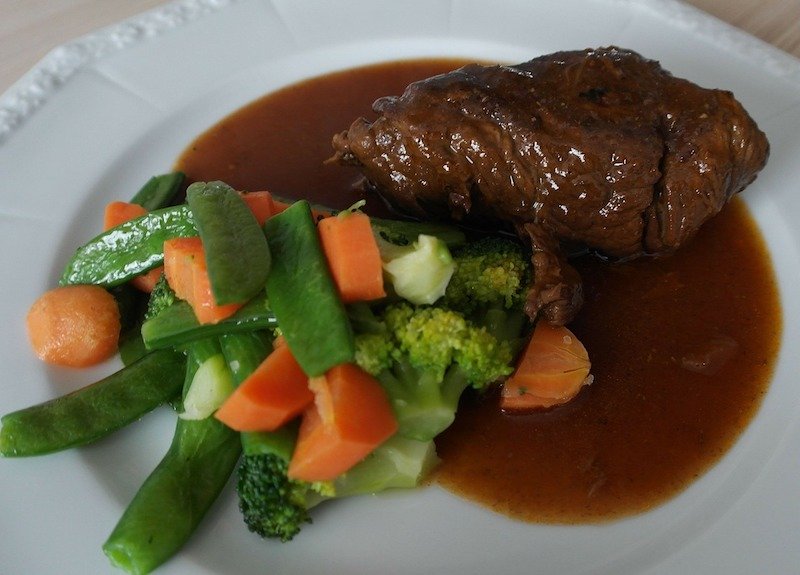Braising vs Sous Vide
Braising and sous vide cooking often confuse new cooks. Both require long preparation times, but there are some crucial differences. If you’ve been meaning try these cooking methods and want to learn more about braising vs sous vide, this article is for you.
What Is Sous Vide Cooking?
Sous vide, which translates to “under vacuum,” was first introduced back in 1799 by Benjamin Thompson, Count Rumford. Essentially, it’s low temperature cooking over a long period of time. Food is placed in a Ziploc or vacuum-sealed bag and submerged in water under highly regulated temperature.
Typically, cooking times are between one to seven hours at a temperature of around 130 to 140°F for meat (this is usually higher for vegetables). The precisely regulated temperature and cooking time ensure the food is cooked evenly, retains moisture, and has superior flavor and texture, even with irregularly-shaped or thick items.
For the full details on what sous vide cooking is, click here.
What Is Braising?
Braising is a cooking technique that uses dry and wet heat. With this technique, the dish, usually meat, is prepared at high temperatures. This is where the dry heat comes from. After the meat has developed the caramelized, crunchy crust, it’ll simmer for a long period at a low temperature in a pot with a small amount of water. This second phase of cooking entails using wet heat.
Besides water, cooks often use other liquids, such as stock, wine, water with seasonings, etc. Both phases are equally important. While dry heat creates a flavorful crust, the wet heat makes the meat lean and tender.
In the past, cast iron pots were the main dishes for braising meat. These meals were usually prepared over the fire, allowing the crust to develop. The cast iron could produce steam, tenderizing the meat.
Nowadays, most people use a crockpot or a pressure cooker to braise food. They usually start by putting the dish on the stove and finishing it off in the oven. Some popular braised dishes are pot roast, beef brisket, chicken cacciatore, pork belly, etc.
During the colder weather, many people tend to braise their meat more as this technique makes meals more flavorful and heartier. Braising also tenderizes tougher meat, as liquids and temperature differences help break down collagen.

Braising vs. Sous Vide: Similarities and Differences
Braising might sound a lot like sous vide cooking. After all, both require time if you want the dish to retain its natural flavors, and they both use wet heat to cook food. But those are the only similarities between these two cooking methods. Other than that, they differ in the temperature required, the amount of liquid, tools needed, the end result, and flavors.
To have a better insight into the similarities and differences, check out the table below:
| Braising | Sous Vide | |
| Time of cooking | Long | Long |
| Temperature | High temperature, then low | Consistent temperature |
| Utensils | Dutch oven, crockpot, pressure cooker | Sous vide device, containers |
| Meat texture | Tender, falling apart | More compact |
| Flavors | Less flavorful | Enhanced natural flavor |
Let’s take an even closer look now, starting with the temperature. When braising, the key is changing the temperature. With sous vide cooking, the most important thing is temperature consistency.
As for the amount of liquid, you generally need more when sous vide cooking. You’re essentially creating a water bath for foods. When braising meals, a small amount of liquid will be sufficient.
Next, the tools you use for braising and sous vide cooking are entirely different. For braising, you can use a crockpot, pressure cooker, or Dutch oven. But the sous vide technique requires a special device to control the temperature and special containers.
Furthermore, there’s a huge difference in the end result. The braising method will tenderize the meat, giving it a fall-apart texture. On the other hand, the aim of sous vide is to retain a meatier texture (but will still give you very tender meat).
Finally, the flavors are entirely distinct with braising vs. sous vide cooking. Sous vide cooking enhances the natural flavors and aromas of the dish. When braising, most of the flavors go to the liquid, so the dish isn’t as flavorful as sous vide cooking.
In Summary
If you ask me, sous vide is the way to go over braising. You can get extremely tender meat that’s falling off the bone with sous vide cooking and also use the leftover bag juices for any type of sauce you want. And, once everything is set up, the cooking process is entirely hands-free.
Also, people may think that sous vide cookers are too expensive, but there are actually some really good low-cost sous vide cookers out there that will still give you great results.
Interested in learning more about how sous vide cooking compares to other cooking methods? Check out these articles below:







